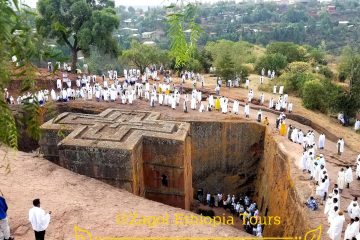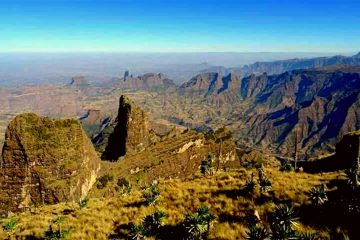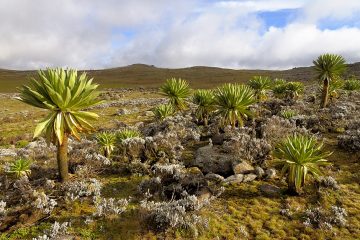A fantastic spaghetti-western landscape of flat dry plains and towering rock outcrops, the scenically spectacular region known as GHERALTA, some 25km west of Wukro, is home to some 30-odd rock-hewn churches, the largest concentration in Ethiopia, Some of the fascinating rock-hewn churches which found round GHERALTA escarpment. Some of the attraction site seeing round Hawzen to GHERALTA area.
About Hawzen and The Gheralta Escarpment
Find your tour
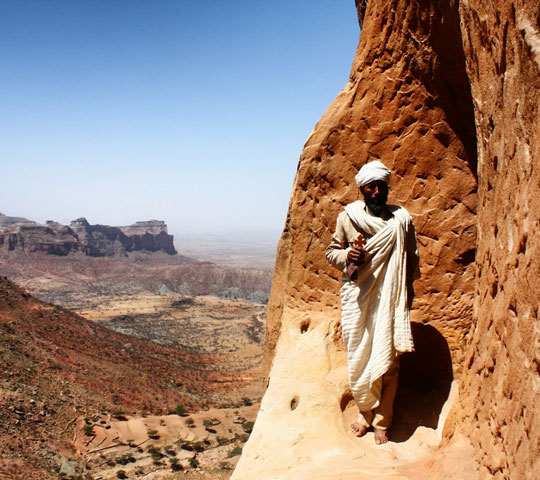
Abune Yemata
Abune Yemata can be reached from the historic town of Hawzien, turning off at the village of Megab, keeping the rock mass to ones left. The church is carved on the cliff face of the one of the mountains of Ghu and there are no ropes to assist with the ascent, however you will find footholds and handgrips in the rock face.
Just before the entrance to the church there is a narrow ledge carved in the cliff from which one can view a sheer drop of approximately 800 to 1000ft.
Abune Gebre Michael
Abune Gebre Mikael is located 16 kms south of Abune Yemata set upon western side of Koraro. The church is one of the finest churches in GHERALTA.
The hike up takes just over one hour to reach an elevation of around 2,000 meter. This hike is challenging, as you ascend from the valley of Koraro to the top of the overshadowing mountain, but not technical.
This church has two wood-fitted doors and four windows through which the sanctuary receives direct sunlight. It is cruciform in design and cut beautifully into a dome-like rock. Eight columns support its well-decorated ceiling that is secured together with arches. Four of the pillars are incised with crosses and offer a unique architectural design from the 4th century.
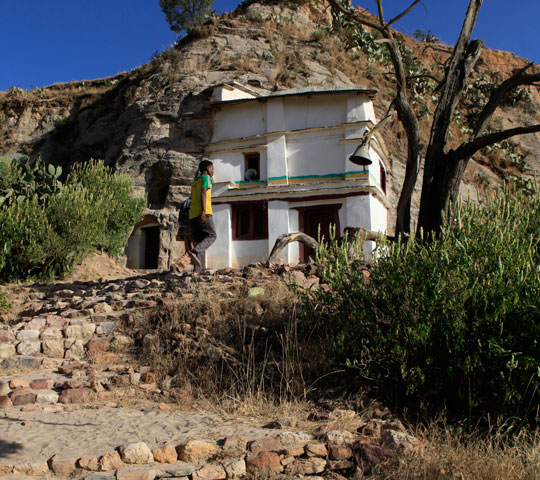
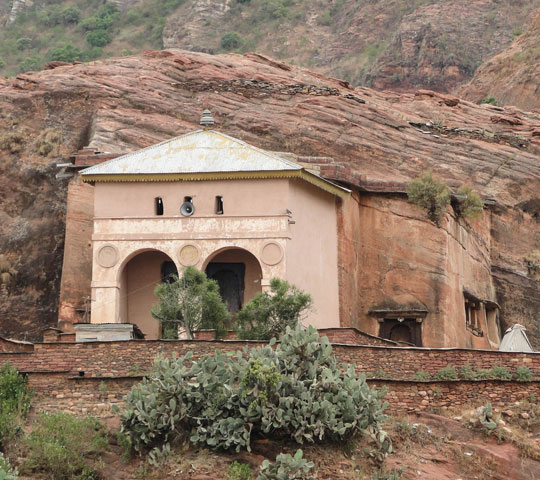
Abreha Atsbeha
Abreha Atsbeha is an outstanding rock-hewn church that is located around 30km southeast of Hawzien and 15km outside of Wukro town. This church is dedicated to the famous twin Axumite Kings, Abreha and Atsbeha, who introduced Christianity to Ethiopia during the 4th century. The church is said to be the final resting place for the Axumite twins who are commonly known by their other names, Ezana and Saizana, respectively.

